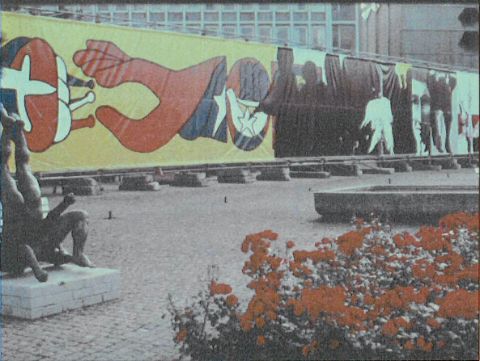Franz Lehmkuhl

Franz Lehmkuhl, still from Chilenische Wandmalerei, Ein Film von Franz Lehmkuhl (1977–80). Courtesy of the artist
Since 1977, film director Franz Lehmkuhl has dedicated his work to documenting political realities and struggles, such as the experiences of Palestinian refugees and the Kurdish community. His film Chilenische Wandmalerei (1980) depicts the work of the Antifascist Art Brigade Pablo Neruda, comprising renowned Chilean artists in exile in Paris, including José Balmes, Gracia Barrios, and Guillermo Núñez. The film shows the Brigade in Kassel in 1977, painting a sixty-metre-long mural as part of the International Solidarity Movement on the margins of the 6. documenta. Opposing the Chilean fascist dictatorship (1973–90), the mural incorporates motifs from the Chilean Brigade Ramona Parra such as an open flower symbolizing hope for peace, as well as the iconic anti-war symbol of a dove impaled on a bayonet from a 1932 photomontage by German artist John Heartfield titled Niemals wieder!. The mural was made possible through the initiative of activists such as Gerald Warnke, the collaboration of the youth brigade Salvador Allende, and art students in Germany. By combining conversations with passers-by about National Socialism in Germany with archival material, the film connects historical fascism and its new appearances, bringing, as muralism intends, political consciousness to public life.
WORK IN THE EXHIBITION: Chilenische Wandmalerei, Ein Film von Franz Lehmkuhl (1977–80), 1-channel video, colour, magnetic stripe (original), 30'. Courtesy of the artist